
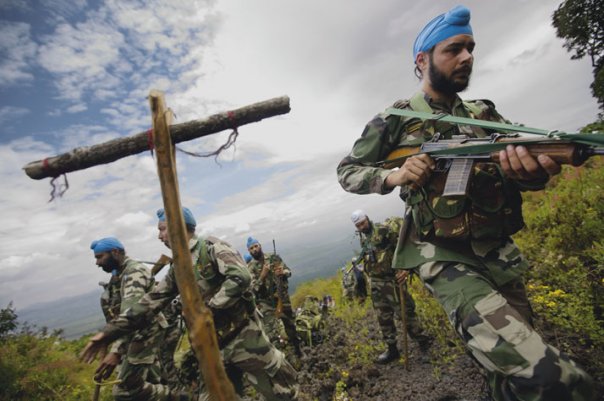
Blogged by: Amol Singh
Virunga National Park lies in Eastern Congo adjacent to Rwanda. Throughout the past fifteen years, the region has been embroiled in communal strife and has become the backdrop for some of the most wanton killings of peoples in recent history. In the battle over the area’s vast natural resources, militias, poachers, and park rangers are in a constant struggle to establish domain over the park and its enormous natural resources. The park initially became famous for its population of increasingly rare Silverback Mountain Gorillas. Although protected internationally, the gorillas (and the rangers sworn to protect them) are powerless against an illicit $30 million natural resources trade involving the pilfering of local charcoal deposits.
In a National Geographic article published last year, journalist Mark Jenkins recounts his trip inside the National Park in search of the Silverbacks. Jenkins and a team of Park Rangers were escorted by a party of Sikh UN Peacekeepers.
We hike in the next morning. Our force numbers almost 50, including 12 rangers and Muir. At its core are 18 Sikhs, all veteran fighters, commanded by Maj. Shalendra Puri. UN soldiers are typically called “blue helmets,” but in this case they are the blue turbans.
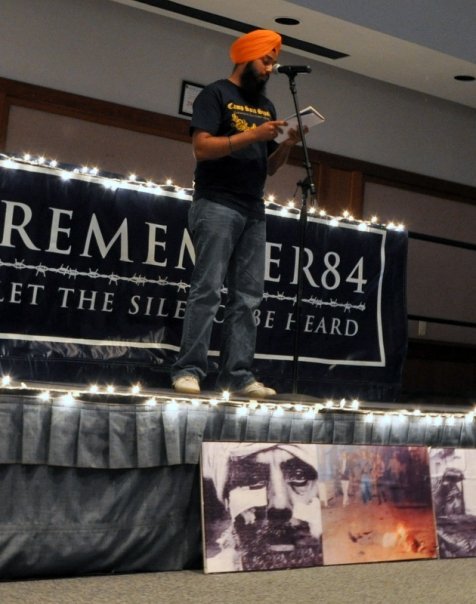 This past Saturday night, twenty artists from all over the country took to the mic in front of a packed and energetic crowd at the University of Maryland for Lahir 2009. It was a powerful evening of remembrance and reflection to commemorate the 25th anniversary of the 1984 Sikh Holocaust, organized by the DC Sikh Youth.
This past Saturday night, twenty artists from all over the country took to the mic in front of a packed and energetic crowd at the University of Maryland for Lahir 2009. It was a powerful evening of remembrance and reflection to commemorate the 25th anniversary of the 1984 Sikh Holocaust, organized by the DC Sikh Youth.
It was amazing to see teenagers, college students, young professionals, and even a few parents take to the stage and share their thoughts and reflections about 1984, human rights, and justice. Not only did the performers span across generations, but the performances themselves ranged in art form from musical pieces, poetry, and spoken word.
For me, it was fascinating to see how different each of the performers connected with 1984 – early in the show one artist eloquently recited an excerpt from Sirdar Kapur Singh’s 1966 speech to parliament, another tied environmental issues and water rights to 1984, while others shared personal accounts, poetry, dharmik geets, and dhadi vaaran. Regardless of how different each artist connected to 1984…the connection itself was strong…and watching that unfold on stage was absolutely breathtaking!
The evening concluded with G.N.E performing some of their recent tracks in front of their hometown audience. Seeing uncles and aunties “waving from side to side” was definitely a sight to remember.
A nice piece in the Columbia Journalist discusses the challenges incurred by young Sikh men and women as they navigate through their adolescent years. The article tells us of two friends, Sonu Singh and Manjinder Singh, who have bonded over their love of hip-hop, video games, and (of course) girls. However, as the article notes, what sets these friends apart is the fact that while Manjinder chooses to keep his kesh, Sonu plans to grow his hair and wear a pagh later on in life.
Sonu and Manjinder embody a larger tension within the Sikh community – the internal dilemma among children to remain true to their faith while still fitting in with their peers. After the terrorist attacks of September 11, 2001, some Sikhs simply do not want to stand out. Incidents of harassment and discrimination towards Sikhs students have increased dramatically since then…
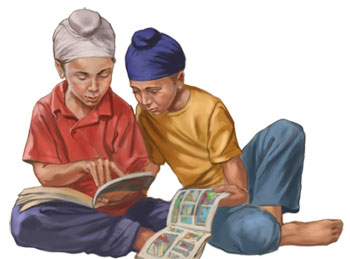 The article talks about the various cases of harassment and bullying which have taken place in New York City schools. The Sikh Coalition has stated that almost half of students who wear paghs have experienced physical violence in school. Yes, half! While bullying affects children of all ethnic groups, it is clear that Sikh children feel especially vulnerable. In addition, many young Sikh children don’t feel that they are adequately equipped to deal with harassment targeted at their physical appearance.
The article talks about the various cases of harassment and bullying which have taken place in New York City schools. The Sikh Coalition has stated that almost half of students who wear paghs have experienced physical violence in school. Yes, half! While bullying affects children of all ethnic groups, it is clear that Sikh children feel especially vulnerable. In addition, many young Sikh children don’t feel that they are adequately equipped to deal with harassment targeted at their physical appearance.
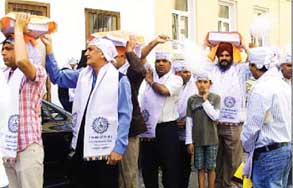 Beyond brown or white Sikhs, beyond various caste Sikhs, when and how do we come together as Sikhs? Is the ‘jahaaz’ that is Guru Nanak’s Naam large enough to carry us all, or with a narrow set of doxies and praxis do we restrict those that can enter.
Beyond brown or white Sikhs, beyond various caste Sikhs, when and how do we come together as Sikhs? Is the ‘jahaaz’ that is Guru Nanak’s Naam large enough to carry us all, or with a narrow set of doxies and praxis do we restrict those that can enter.
Despite the various attacks on the Singh Sabha movement for only promoting Khalsa hegemony and other spurious slanders by neo-Sanatans, post-colonialists (I am reminded of a professor that once told me that he would only become a post-colonialist, when colonialism ends) attempting to form neo-Brahman ‘intelligentsias’, those that believe they ‘own’ the Sikh identity, some Hindu chauvinist groups, and various beatniks, the movement was in fact very broad-minded and fought to enlarge the tent that is the Sikh Qaum.
They understood the difference between public and private aspects. In private, people may have their own practices, beliefs, etc. and while the Singh Sabha sought to bring these more in line with the practices and principles of Gurbani, they did allow some diversity in private. In public, we come together and stand by the Panthic rehat maryada.
For many years the Ravidasia, occupied such a place. They had distinct practices in their own places of congregation, but they were part of the larger Sikh Qaum. That was until now.
Oregon recently passed a bill to repeal its ban on religious attire in the workplace, a policy adopted 100 years ago as part of anti-Catholic backlash. However, it let stand an exception to this act — specifically, it continues to ban wearing “religious attire” in classrooms. Its decision strikes against its stated policy goal: to ameliorate religious discrimination in the workplace.
Religious affiliation is a protected class under U.S. equal protection (14th Amendment) and Civil Rights law, but it is subject to a much more lenient standard of review than other forms of discrimination (e.g., race). In 1980, the Supreme Court upheld Oregon’s workplace ban. The Legislature supports its ban by claiming that it is designed to avoid proselytization in the classroom. This is both misguided and continues to advance discrimination.
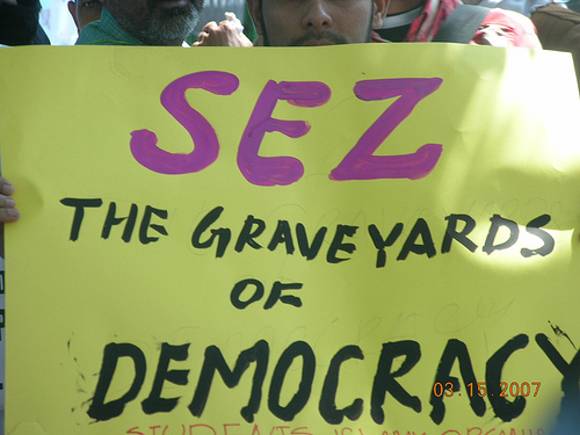 Earlier this month TLH discussed how the unseasonably dry summer in Punjab is threatening its agriculture and economy. This week, the Punjab Assembly adopted a resolution authorizing the development of additional Special Economic Zones, or SEZs, while streamlining and supporting the existence of pre-existing SEZs.
Earlier this month TLH discussed how the unseasonably dry summer in Punjab is threatening its agriculture and economy. This week, the Punjab Assembly adopted a resolution authorizing the development of additional Special Economic Zones, or SEZs, while streamlining and supporting the existence of pre-existing SEZs.
SEZs are not entirely new to Punjab. In 2006, Punjab cleared thirteen (13) SEZs for development and approval, and the proposal was approved by the Indian central government in 2007. The current number of “greenlit” SEZs in Punjab currently totals 12, but the number could increase extensively.
Punjab has been divided numerous times. Both during and after partition. Anita Rau Badami eloquently writes, “First it was Partition and half our land disappeared. Now our own leaders are chopping it up like a piece of meat”. The Punjabi language was one thing we hoped would cross borders despite all the “chopping”. Ultimately, it was the language of the Punjabi soul regardless of how political borders were drawn.
However, the Punjabi language is being lost. It has been granted “second language status” under the Official Language Act. Although extremely disappointing that Punjabi is given a 2nd status-one walks away thinking at least it still has some official status. However, Punjabis’ actions are speaking louder than our words when Punjabi is virtually not being taught in schools or used in official administrative work in Chandigarh. This abandonment is occurring despite the availability of financial assistance from the Central Government government to hire Punjabi language teachers. This financial assistance is supposed to cover the entire financial costs of language teachers’ appointments and salaries.
Prabhjot Singh writes for “The Tribune” that the Human Resource Development Minister Kapil Sibal (a Punjabi himself) stated:
None of the northern states other than Himachal Pradesh had applied for financial assistance for the appointment of Punjabi teachers during the past three years. Only Himachal Pradesh had obtained a grant in October 2007 for the appointment of 100 Punjabi teachers.
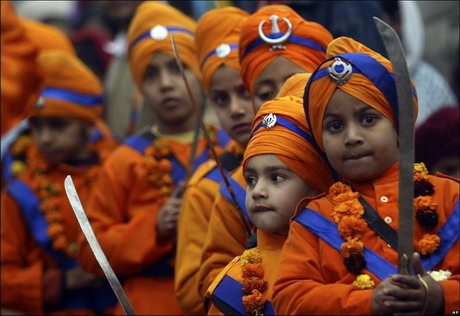 It’s that time of year again…camp time! Sikh youth all over the world are packing their bags and heading out to their favorite Gurmat camp to learn, reflect, and have a blast with their Sangat! I’m very lucky to have been involved in Sikh youth camps for most of my life – as a camper, counselor, and administrator…and boy do I have a few stories to tell! To mark this exciting time, I’d like to share a story I call “Proud To Be Six.”
It’s that time of year again…camp time! Sikh youth all over the world are packing their bags and heading out to their favorite Gurmat camp to learn, reflect, and have a blast with their Sangat! I’m very lucky to have been involved in Sikh youth camps for most of my life – as a camper, counselor, and administrator…and boy do I have a few stories to tell! To mark this exciting time, I’d like to share a story I call “Proud To Be Six.”
I remember the first time I was ever a counselor. I was 18 years old and my first task was to lead an orientation for the youngest kids at camp. After several unsuccessful attempts to a lead a discussion, I went with what I knew…and just did a bunch of jakaray!
The kids were all riled up and having a blast! Then I yelled at the top of my lungs, “Are you proud to be Singhs & Kaurs of the Guru!” They all yelled out “Yeeeaaahhh!” “Are you proud to be Khalsas!” They all yelled out “Yeeeaaahhh!” “Are you proud to be Sikhs!” Silence…
I thought perhaps they didn’t hear me. I said, “Are you proud to be Sikhs!” Still, silence…then all the kids started looking around at each other in confusion.
Then finally, one brave little boy raised his hand and said, “VeerJi, I’m only five.” Quickly, hand after hand went up with kids saying “me too, me too…I’m only four”
After holding in my laughter and finally composing myself, I thought I would try an experiment. Although I had to cringe when I said it, I yelled out:
Are you proud to be Seeeeks! They all yelled out “Yeeeaaahhh!”
 Gurdwara Panja Sahib, located just outside Pakistan’s North-West frontier province, has become the temporary home for about 3,000 Sikhs who have been displaced by the presence of the Taliban in the region. Gurdwara Panja Sahib is one of the most notable Sikh shrines in Pakistan and has been transformed into the ultimate role of a gurdwara. With help from community donations, the gurdwara has a clinic, a 24-hour kitchen and a temporary school for children. For the past two months, Sikh families have been living at the gurdwara, afraid to return back to their homes. Some of the region’s refugees have started to return back to their homes in military-protected convoys. However, many Sikhs feel they may never be able to move home,
Gurdwara Panja Sahib, located just outside Pakistan’s North-West frontier province, has become the temporary home for about 3,000 Sikhs who have been displaced by the presence of the Taliban in the region. Gurdwara Panja Sahib is one of the most notable Sikh shrines in Pakistan and has been transformed into the ultimate role of a gurdwara. With help from community donations, the gurdwara has a clinic, a 24-hour kitchen and a temporary school for children. For the past two months, Sikh families have been living at the gurdwara, afraid to return back to their homes. Some of the region’s refugees have started to return back to their homes in military-protected convoys. However, many Sikhs feel they may never be able to move home,
Two months ago, long-haired Taliban fighters stormed into Orakzai, a tribal agency near the Afghan border, brandishing AK-47 rifles and bringing a harsh demand: that the area’s 40 Sikh families should pay jazia, an ancient tax on non-Muslims living in an Islamic state. To encourage the payment of 12m rupees (£90,000), they kidnapped and tortured one of Singh’s neighbours. The Sikh community banded together to pay half the money, secured his release, then fled. “The Taliban are still demanding the money,” said Singh, a sprig of orange visible under his blue turban. “They recently rang me looking for the rest of the money. We are afraid they will find us, even here.” [link]
 Turbanology, or knowledge of Turbans, is a TV documentary recently released in the UK which explores the meaning of the turban in England since the London bombings. Filmmaker, Jay Singh-Sohal, was working for a conservative think-tank in the US when he first began considering the misconceptions surrounding the turban and the subsequent profiling of individuals and communities. The documentary discusses the origin and importance of the turban in modern Britain to “see whether it’s just harmless headwear or really the fashion of a fantatic”.
Turbanology, or knowledge of Turbans, is a TV documentary recently released in the UK which explores the meaning of the turban in England since the London bombings. Filmmaker, Jay Singh-Sohal, was working for a conservative think-tank in the US when he first began considering the misconceptions surrounding the turban and the subsequent profiling of individuals and communities. The documentary discusses the origin and importance of the turban in modern Britain to “see whether it’s just harmless headwear or really the fashion of a fantatic”.
The film addresses the impact 9/11 and 7/7 has had on the [mis]understanding of the turban as a symbol of fear, hatred and global terrorism. Australian researchers at the University of New South Wales published a study in 2008 which found that simply noticing someone could be a Muslim increased the aggressive tendencies on the part of non-Muslim westerners. They called it the “Turban Effect.” Turbanology seeks to raise awareness of the turban’s importance and discuss why the people who wear it consider it a crown. In the documentary, Jay Singh-Sohal speaks to music producers, politicians and ordinary Sikhs and Muslims who have been affected by wearing a turban. (A preview of the documentary can be seen after the jump).
“The documentary discovers that simply noticing someone could be a Muslim increases the aggressive tendencies of westerners. The give-away sign is the turban, and the beard. Whether conscious or sub-conscious, the fact that terrorism is a worry for many people means that there’s been a rise in profiling who could be a threat – an issue explored in the piece.” [link]
 The list of 1984-inspired Sikh propositions continue to grow. In the past, I have mentioned more than my fair share and last week my fellow langa(w)r-iter added one more. Here is another great proposal.
The list of 1984-inspired Sikh propositions continue to grow. In the past, I have mentioned more than my fair share and last week my fellow langa(w)r-iter added one more. Here is another great proposal.
This year marks the the creation of two great scholarships by the Jakara Movement. One aimed at high schoolers: “Bhai Amrik Singh Scholarship for Excellence” and the other at junior/community college transfers: “Bibi Upkar Kaur Scholarship for Excellence.” In this 25th year of commemoration of the 3rd Sikh Genocide (Ghallughara), these are the institutions that will last. The Scholarships provide national recognition and financial support for students, who exhibit outstanding academic strength as well as exceptional service to Sikhs and the American community at large.
The organizers describe them:
In honor of two pioneers of Sikh activism, Bibi Upkar Kaur and Bhai Amrik Singh’s exemplary dedication to the Sikh community are illustrated by their association with Sikh student organizations. Both were presidents of their respective Sikh student organizations and lived by their convictions of striving for excellence through dedication and perseverance in all aspects of their lives. Both applied this conviction to their educational pursuits, being accomplished students, and supportive of other students in pursuing academic excellence and achievement as well. They believed that as Sikhs, students had the obligation to not only excel in education, but also to carry the responsibility of being of service to the community. Bibi Upkar Kaur and Bhai Amrik Singh gave their lives for this very cause. Hence, these distinguished awards reflects Bibi Upkar Kaur and Bhai Amrik Singh’s legacies of commitment to academic excellence and service to the Sikh community as well as the greater community at large.
Early last week, a remarkable thing happened. Sikh children took to NYC streets again- some in strollers- and they were heard.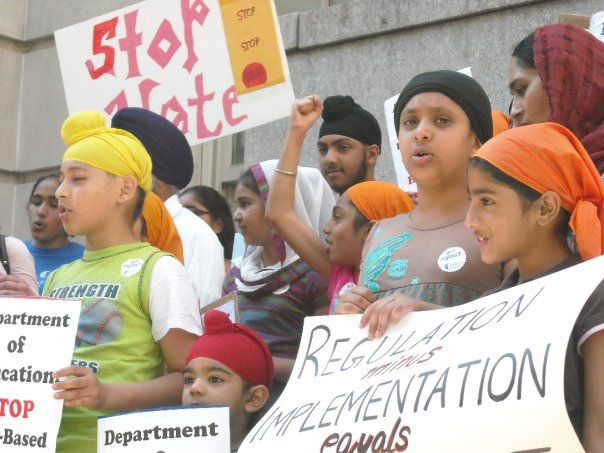
Last fall, the New York Department of Education passed a regulation in response to disturbing findings about the bullying that Sikh children face in schools. The regulation promised to define, track, and prevent bias-based harassment in NYC public schools. So after the first school year in which the regulation was in effect, how did the schools measure up?
The results were made public at a recent press conference by the Sikh Coalition and Sikh youth in NYC in front of the Department of Education’s headquarters. The Sikh Coalition teamed up with area organizations including the Coalition for Asian American Children and Families (CACF) and the Asian American Legal Defense and Education Fund (AALDEF), to release a report card grading the first year of the regulation’s implementation. Speakers at the press conference included representatives from Queens and Brooklyn schools and organizations such as the New York Civil Liberties Union (NYCLU), Desis Rising Up and Moving (DRUM), and Make the Road NY.
Problems remain, the report card shows. Based on the Sikh Coalition’s survey, there was no significant decline in the rate of harassment in the first year of the regulation’s implementation. [pg.9] Perhaps most disturbingly, out of all harassment reported by children, 16% was committed by a school official such as a teacher, school staff member, or security officer. [pg.12] In addition, after 90% of reported incidents of harassment to school officials, the school failed to properly follow protocol for investigation and follow-up. [pg.11]
For the full report card, click here.
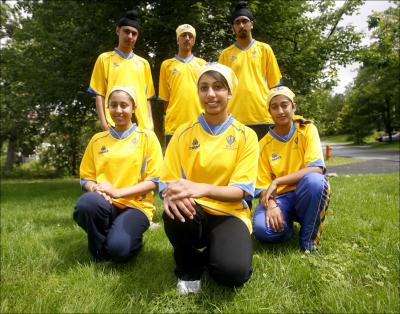
In order to provide a little bit of cheer as we head into the weekend, I thought I’d share this news bit.
A team of 32 Sikhs partnered to run across Canada, as well as fundraised $10,000, on behalf of children’s hospitals in Canada and in Africa. The runners were commemorating the 10th anniversary of a previous fundraising effort, and they hoped to expand the scope and reach of their efforts.
The runners belong to the Guru Gobind Singh Children’s Foundation, which did a fundraising run from Toronto to Ottawa 10 years ago. This year’s run is in honour of that effort, but on a much larger scale.
In addition to running legs of the race, the team had a van of supporters who provided nourishment and supplies. The runners were housed by Sikh families all across the country as they ran to Ontario, where the remainder of the relay was run by another team, in partnership.
Punjab’s historical economic dominance is well known. We hear about it when studying The Raj and the years following it. However, we also know that Punjab’s current economic position does not provide many new jobs for college graduates. Thus, these graduate are looking for jobs outside of Punjab-often in Western countries. Recently, there was a comparative study by the Economics Department at Punjabi University, Patiala to provide research data for these conclusions. This study “… revealed that Punjab is lagging behind for providing employment to its educated and skilled people in the last two decades”.
“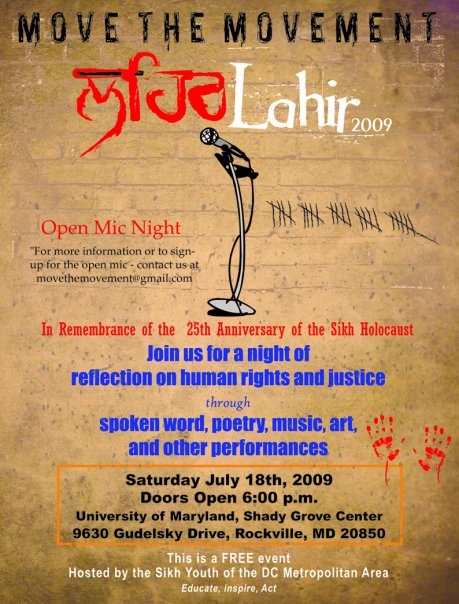 Never doubt that a small group of thoughtful, committed citizens can change the world. Indeed, it is the only thing that ever has.”
Never doubt that a small group of thoughtful, committed citizens can change the world. Indeed, it is the only thing that ever has.”
(Margaret Mead)
Last Summer, a small group of thoughtful, committed Sikh youth from the DC Metropolitan area came together to form “Lahir” (movement) – a conference organized and run by high school and college students to promote human rights awareness. There were three themes to the event. Educate, Inspire, and Act. The “Educate” segment consisted of a series of short presentations outlining the history of post-1984 human rights violations in Punjab, based on published documentation from Ensaaf. These presentations interspersed with videos of the victim’s families told the story of grave violations that occurred between 1984-1995 during the counter-insurgency movement – including torture, disappearances, and illegal cremations. The “Inspire” segment consisted of poetry, spoken word, and musical performances along the same theme. In the final portion, titled “Act”, participants broke out in to discussion groups and brainstormed ideas on how the Punjab case can be raised to a mainstream audience and reviewing what other communities have done to highlight their cause. Overall, the conference was a resounding success and launched several new initiatives.
This Summer, the Lahir team has re-assembled and Sikh youth activists and artists from all over the country will again descend upon the Nation’s Capital for Lahir 2009! This year’s format is an all-out ‘Open Mic’ with musical performances, displayed art, poetry, and spoken word. Trailers have been circulating around the internet, providing a glimpse of what to expect.
Co-blogged by Sundari and Camille.
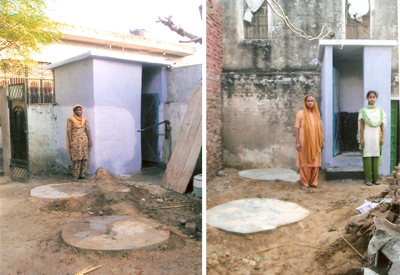 While many LangarHall moments are spent bringing awareness to adverse issues impacting our community, we believe it is equally important to highlight solutions to these problems. There are several people and organizations who are working to improve the social development and health of communities around the world. One example of a simple yet life changing initiative is a toilet. Yes, toilets. A facility taken for granted by many and something that over 2 million people around the world are in need of. The Punjab Lioness Toilet Foundation was created to provide awareness of communities in need of basic toilet and sanitation facilities,
While many LangarHall moments are spent bringing awareness to adverse issues impacting our community, we believe it is equally important to highlight solutions to these problems. There are several people and organizations who are working to improve the social development and health of communities around the world. One example of a simple yet life changing initiative is a toilet. Yes, toilets. A facility taken for granted by many and something that over 2 million people around the world are in need of. The Punjab Lioness Toilet Foundation was created to provide awareness of communities in need of basic toilet and sanitation facilities,
As a family initiative the Punjab Lioness Toilet Foundation wants to empower people to take action in providing basic toilet needs to less fortunate families in Punjab, India. The foundation was started in the memory of our late mother Pritam Kaur Bahia who passed away on November 18th, 2004. She was known as the “Sherni” a.k.a. Lioness. [link]
Founded by Mandip Kaur Sandher, one of the goals of the organization is to break the “toilet taboo,” which comes from people’s lack of comfort speaking about a subject which they consider dirty. This stigma is impacting global health and as a result, basic sanitation needs for hundreds and thousands of people around the world.
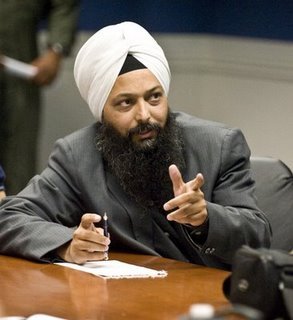 In a previous blog, I wrote about Jarnail Singh Journalist – Sikh Folk Hero. I also mentioned about his action as an act of rebellion that needs the support and institutions to become a revolution. In this post, he, himself, needs support.
In a previous blog, I wrote about Jarnail Singh Journalist – Sikh Folk Hero. I also mentioned about his action as an act of rebellion that needs the support and institutions to become a revolution. In this post, he, himself, needs support.
Unfortunately this week, as he flung his shoe demanding justice, he, himself, was victimized as he was terminated from the Hindi news daily Dainak Jagran, after more than a decade of service.
“As a journalist, I regret what I have done. It was not proper for a journalist to act in that manner. I was emotionally overtaken and exasperated, just like so many Sikhs are,” he said today.
“But I thought the chapter was closed because of the way the home minister had reacted and had accepted that not enough people (who were behind the killing of Sikhs in 1984) had been punished,” Jarnail said.
“Now I feel that I am being victimised, punished for raising my voice against the injustice of 1984 and the CBI’s and the government’s unwillingness to prosecute those who were responsible for it”, Jarnail said. He said he was even more resolute now.[link]
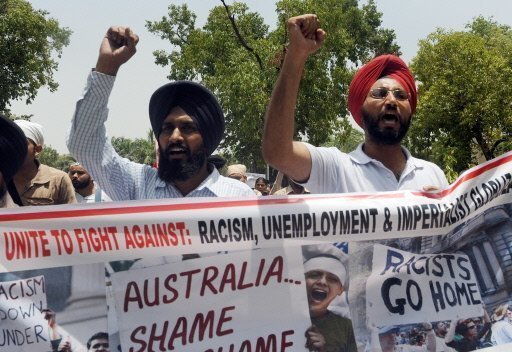 A Sikh exchange student from Punjab became the 20th victim, this year, of a hate crime in Australia. His attackers attempted to rip off his turban and forcibly cut his hair. According to the AFP, this is the latest in a wave of attacks against desis in Australia.
A Sikh exchange student from Punjab became the 20th victim, this year, of a hate crime in Australia. His attackers attempted to rip off his turban and forcibly cut his hair. According to the AFP, this is the latest in a wave of attacks against desis in Australia.
These attacks have been the subject of public protest, both among university students in Australia, and among others in India. Australia has been under pressure to address these hate crimes, and has been deploying police while claiming that these attacks are uncommon. The sheer number, however, indicate a wider tension between victims of racial hatred and violence, and their attackers. The last attack on a desi student, for example, has left the victim comatose. While the Australian government denies that these are racist attacks, the particular nature of these incidents seem to contradict this position. Does this spate of violence, then, expose the seemier underbelly of Australian race relations?
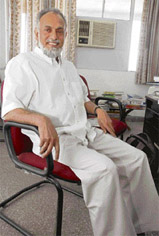 It is with saddness that we report on the passing of Ram Narayan Kumar, a human rights activist who actively and vocally worked on the dissapearances and killings in Punjab. He was 56 years old.
It is with saddness that we report on the passing of Ram Narayan Kumar, a human rights activist who actively and vocally worked on the dissapearances and killings in Punjab. He was 56 years old.
Kumar was a born human rights activist. He had engaged himself with human rights activism since 1975 when he was jailed for 19 months for protesting against the imposition of emergency. Though he belonged to Andhra Pradesh, his conscience dragged him to protest against the wide spread human rights violations in Punjab. There he co-founded Committee for Coordination on Disappearances in Punjab (CCDP) and co-authored a voluminous edition called ‘Reduced To Ashes’, a compilation of about 600 cases of human rights violations in the state. This report prompted the National Human Rights Commission to take cognizance of the large scale custodial disappearances and deaths in Punjab during that decade. [link]
In Terror in Punjab, Ram Narayan Kumar traces the roots of Sikh dissent in India that eventually culminated in the armed confrontation in 1984. Kumar also addresses the post-1984 period of Sikh militancy and the Indian state’s success in countering this militancy.
Kumar…documents and pays tribute to the Akali tradition of non-violence. He refers to the Akali Dal’s peaceful struggle for a Punjabi-speaking state, and makes an important point of historical value by highlighting that the Akali agitation of the 1980s for Punjab’s demands constituted “the largest non-violent movement in the sub-continent, including both the colonial and the independent periods, with over 150,000 volunteers courting arrest within a period of three years.” [link]
Ram Narayan Kumar worked extensively with several human rights organizations, including Ensaaf and his contributions to the field of human rights justice were invaluable. He played an important role in defending the rights of families who had been affected by the violence in Punjab. We will remember his work, his contributions and his value to the very important work being done for justice in Punjab.
“Barter” marriages are not uncommon. My grandfather’s generation did it in Punjab because it was wise to marry two sisters to two brothers; particularly, if the family was large or wealthy. My parents’ generation did it through the “middle-person” during family negotiations in an effort to bring more relatives abroad.
What is uncommon in our generation is that “bartering” is very upfront. It is included in matrimonial ads along with height, skin complexion, and age.
Raveena Aulakh reports for the Toronto Star that some families abroad are pressured and guilted by relatives in India to figure out a way to bring their children to Canada. Siblings in Canada are accused of not wanting their nieces and nephews to have a good life. The only resort left is to run a matrimonial ad requesting a “barter” for their children or nieces/nephews in prominent Punjabi newspapers.
Aulakh writes about Jaspal Singh, a cab driver in Vancouver, who was guilted into running such an ad by his brother in India.
Finally, Singh agreed to place an ad for his own 21-year-old son and 20-year-old daughter in hopes someone, somewhere would reciprocate with Canadian matches for his niece and nephew in India.
It is not only a long shot, it is also unethical, Singh admits. He says he has told his kids he will not force them to do something they are not ready for and that weddings would take place only after they have met their prospective partners and are ready.
He has paid for the ads to run for four weeks. If things do not fall into place by then, Singh says he has no intention of following up with more ads. “How long can you do it? I will not force them to get married for the sake of it.”
Singh knows it will put a strain on his relationship with his brother, and is already dreading that conversation.
